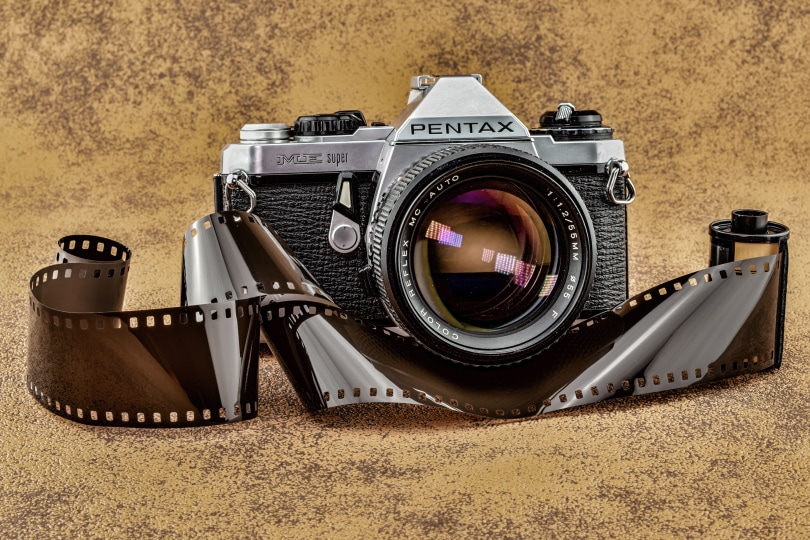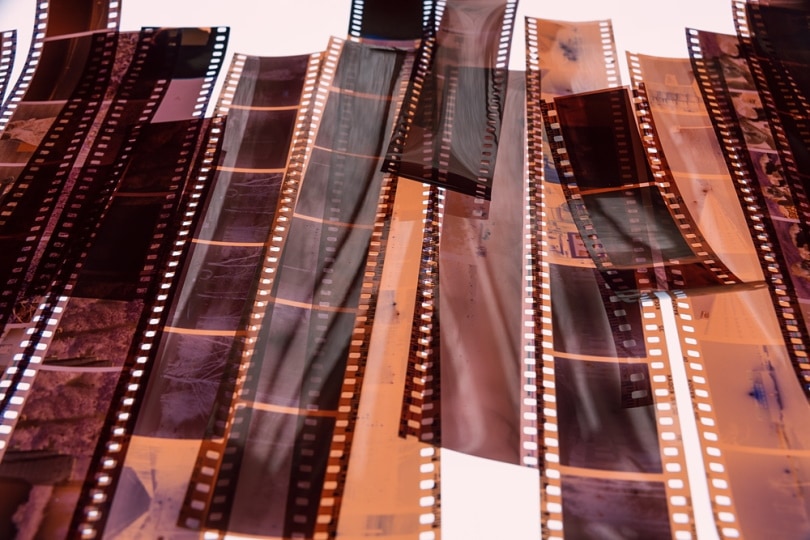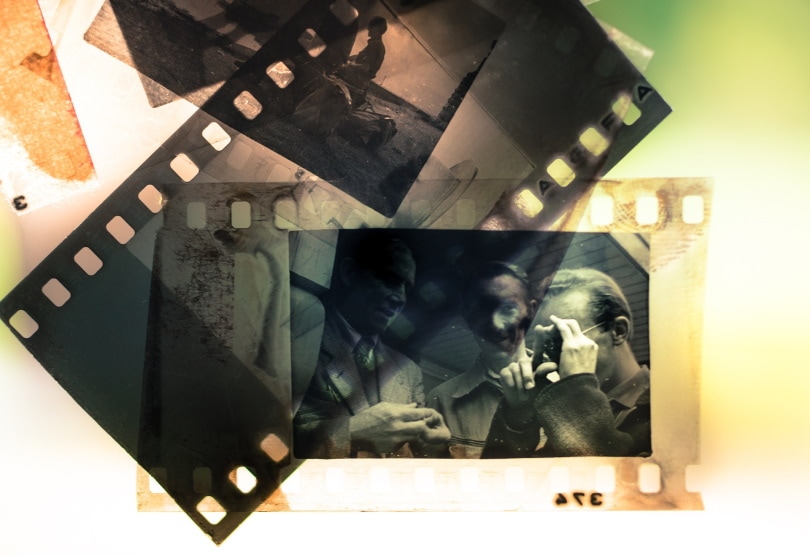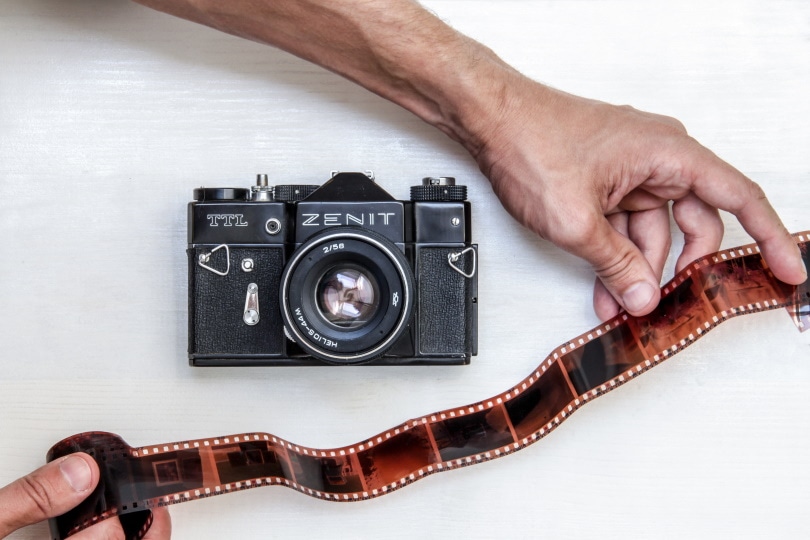3 Types of Film for Cameras (With Pictures)
Last Updated on

While the modern world is all about digital photography, it wasn’t that long ago that film photography ruled the world. Whether you’re just curious about the different types of camera film out there or if you found an old reel and want to know what you’re looking at, not only did we dive into the three different types of film for cameras, but we also broke down a quick lesson on different film formats. All this is extremely important if you’re looking to take film photographs!

The 3 Types of Film for Cameras
1. Slide Film

| Year Introduced | 1972 |
| Quality | High |
If you’re looking for the highest quality film type on the market, this is it. Slide film is also the most similar option to digital photography, and it used to be the go-to option for professional photographers.
When you look at the film, everything is in color, so you know exactly what you’re going to print when you look at it. The problem with slide film is that the ISO on the film is slow, so you need to get extremely precise exposures to get the pictures that you want. If you do it wrong, you can quickly end up with washed-out images and low-quality results.
Also, keep in mind that while most professional photography shops can develop the photos for you, local shops may not know how to do it.
- High-quality photos
- What you see is what you get
- Requires precise exposures
- May require a special processing center
2. Color-Negative Film

| Year Introduced | 1940 |
| Quality | Medium |
Chances are that if you’ve used film photography in the past, color-negative film is what you were using. It was by far the most common type of film on the market, and it’s what you could find in just about every disposable camera. The reason is that is forgiving and easy to use. You don’t need as precise of exposures, which makes it the perfect choice to turn amateurs into photographers.
It’s also typically a low-cost option, but the tradeoff to all of this is the quality. While you can still get plenty of high-quality results with color-negative film, it’s not quite as good as slide photography.
Also, sometimes you’ll end up with an orange tint if you get the exposure wrong. While digital photography lets you correct for this after the fact, if you’re taking pictures with film, there’s a good chance that you’re looking to avoid the digital side of things.
- Easy to use
- Can be processed at multiple locations
- Lower cost option
- Not that high-quality photos
- Sometimes has an orange tint
3. Black-and-White Negative Film

| Year Introduced | 1889 |
| Quality | Medium |
If you’re looking for the oldest film type out there, it’s black-and-white negative film. When you look at the film reel, everything that you see is the wrong color. What’s going to print black appears white, and what’s going to print white appears black.
As you might have suspected, black-and-white negative film only prints in black and white. There is no color in these photos. You can get anywhere from medium– to high-quality results, depending on the rest of your equipment.
Just keep in mind that black-and-white negative film requires a specialized developing process. Most professional-level shops know how to do it and have the proper equipment, but many local shops don’t possess the proper equipment or know-how.
- Easy to use
- The oldest film type
- No color
- Specialized developing process
Film Formats
In the digital world, you don’t have to worry about the right type of film or film format. With film cameras, you need both. It also comes down to the type of camera that you have, as it has a large impact on the eventual results.
There are small, standard, medium, and large photo formats, which affects how large you can get the picture.
Common film formats include 120, 220, 135, APS, 110, 116, and 126, but there are many more out there.
These numbers affect the size of the image that you can process with the film and how the film fits into the camera. You typically can’t mix companies and film formats, as the cartridges won’t fit inside the cameras!


Conclusion
While film photography might be a thing of the past, that doesn’t mean you won’t ever come across it. Whether it’s a history lesson or you’re figuring out how to use a film camera, hopefully, this guide gave you everything that you need to get started!
Featured Image Credit: Piqsels
About the Author Robert Sparks
Robert’s obsession with all things optical started early in life, when his optician father would bring home prototypes for Robert to play with. Nowadays, Robert is dedicated to helping others find the right optics for their needs. His hobbies include astronomy, astrophysics, and model building. Originally from Newark, NJ, he resides in Santa Fe, New Mexico, where the nighttime skies are filled with glittering stars.
Related Articles:
Monocular vs Telescope: Differences Explained (With Pictures)
How to Clean a Refractor Telescope: Step-by-Step Guide
How to Clean a Telescope Eyepiece: Step-by-Step Guide
How to Clean a Rifle Scope: 8 Expert Tips
What Is a Monocular Used For? 8 Common Functions
How to Clean a Telescope Mirror: 8 Expert Tips
Brightfield vs Phase Contrast Microscopy: The Differences Explained
SkyCamHD Drone Review: Pros, Cons, FAQ, & Verdict
